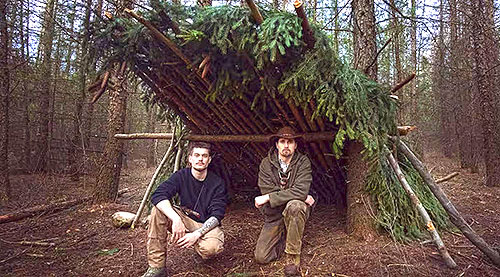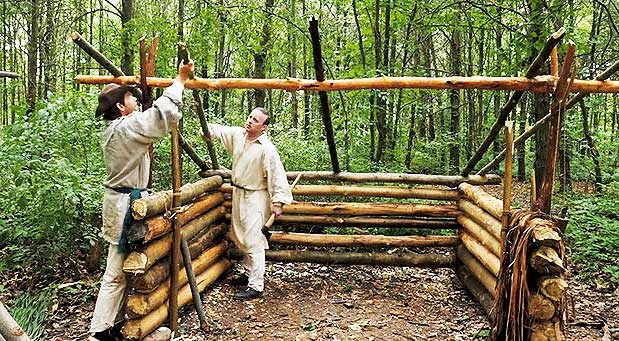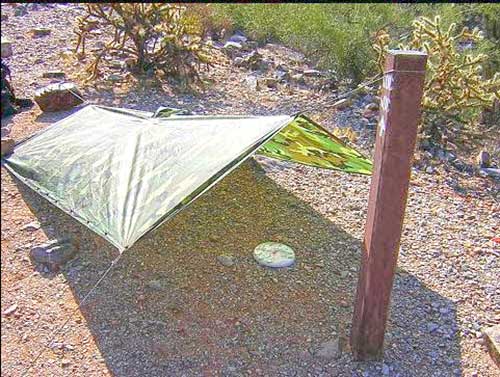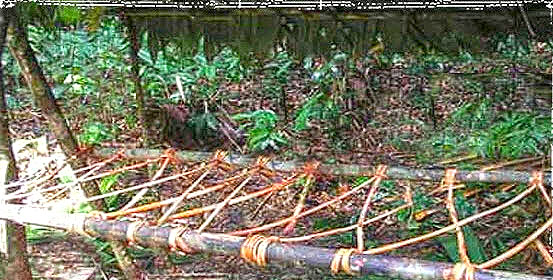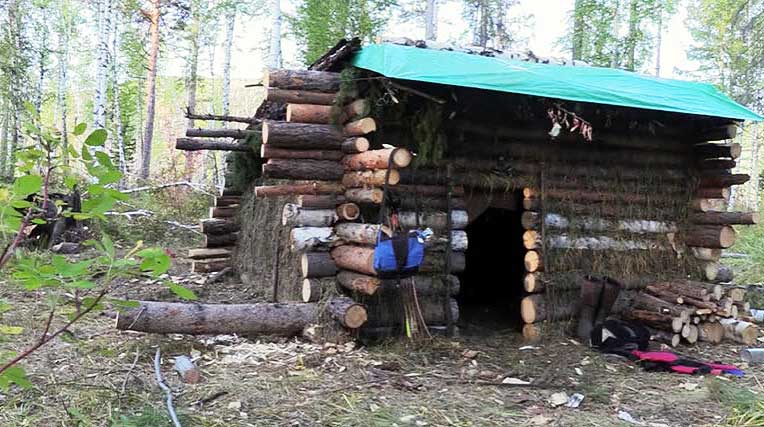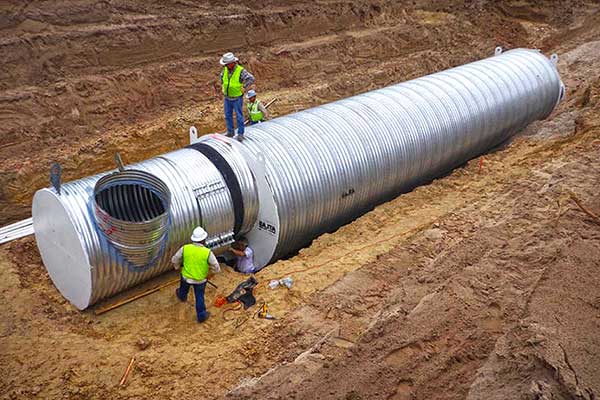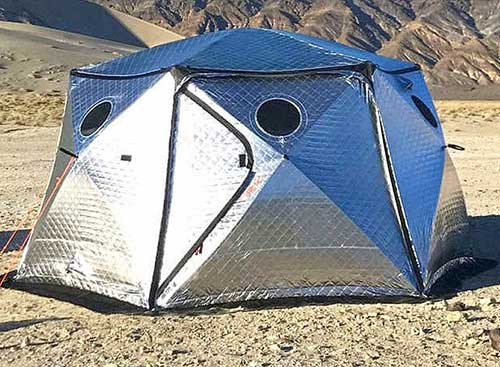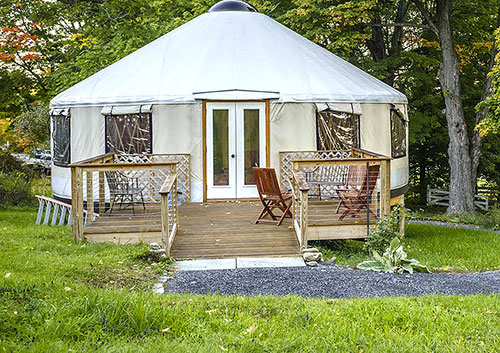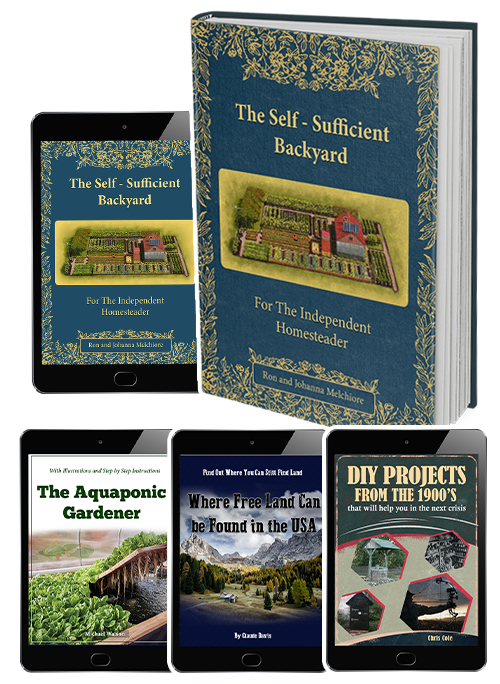- Home
- Shelter
Survival Shelter
Introduction to Your Survival Shelter
In the realm of survival, the significance of a well-crafted survival shelter cannot be overstated.
This shelter is a cornerstone of wilderness survival strategies, provide essential protection from the elements, be it the scorching sun, relentless rain, or biting cold.
These structures range from simple natural covers to intricate constructions, tailored to the environment and available resources.
The concept of the shelter is rooted in the basic human need for safety and comfort in the face of adverse conditions.
Whether in a dense forest, a rugged mountain range, or a barren desert, a shelter serves as a vital barrier against the environment, preserving body heat, offering rest, and potentially saving lives.
Survival scenarios vary widely, from being lost in the wilderness to facing a natural disaster. In each of these situations, the ability to create a shelter can mean the difference between life and death.
For the lost hiker, a makeshift lean-to could provide a night's refuge; for someone stranded in a snowstorm, an improvised snow cave could be a haven from the cold.
Drawing on ancient techniques and modern innovation, your survival shelter can be as diverse as the environments they are built in.
From the Amazonian tribes' use of natural materials to construct rain-proof havens to the ancient ninja's skill in creating concealable shelters for stealth and protection, the art of shelter-building is a testament to human ingenuity and adaptability.
In emergency scenarios, a well-designed survival shelter also plays a crucial psychological role, offering a sense of security and a mental refuge from the challenges of survival.
It's a place to strategize, rest, and gather strength, proving that sometimes, the greatest tool at one's disposal is the knowledge of how to create a small sanctuary in the vastness of the wild.
The
Essentials of Your Survival Shelter
Survival shelters are a fundamental aspect of outdoor survival, providing crucial protection in harsh and unpredictable environments. Their primary purpose is to shield from the elements – rain, snow, wind, and sun – while offering insulation and warmth.
Basic
Requirements of Your Survival Shelter
- Protection from Elements: The primary role of a survival shelter is to offer refuge from weather conditions like rain, snow, wind, and the sun's harsh rays. This is vital in preventing hypothermia or heatstroke.
- Insulation and Warmth: Shelters must conserve body heat, especially in cold climates. Materials like leaves, grass, and snow can act as insulators.
- Safety and Camouflage: In some scenarios, shelters need to provide safety from wildlife or concealment for security reasons.
- Ventilation: Proper airflow is crucial to avoid condensation and ensure a supply of fresh air.
- Ease of Construction: The shelter should be simple to construct with available materials and minimal tools.
Shelter
Needs in Different Environments
- Forests and Woodlands: Abundant natural materials like branches, leaves, and vines make constructing lean-tos and debris huts feasible. These shelters blend with the environment and use the insulation properties of natural debris.
- Deserts: Shelters here require reflective materials to fend off the sun and are often built low to the ground to utilize the cooler air. Natural rock formations can also provide shade and respite.
- Mountainous Regions: Snow shelters, like igloos or snow caves, are common in these areas. They use the insulating properties of snow and need to be well-ventilated to prevent moisture buildup.
- Tropical and Rainforest Areas: Elevated shelters, like stilted huts, protect against damp ground, insects, and predators. They require good ventilation due to humidity.
- Urban Environments: In these settings, adapting existing structures for shelter is common. This might involve reinforcing and insulating abandoned buildings or vehicles.
Survival shelters are a diverse and essential skill in wilderness survival, with their design deeply influenced by the surrounding environment and available resources.
Section
1: Innovative Low-Cost
and Free Survival Shelter Solutions
In the world of survival, the ability to create a shelter with minimal resources is a crucial skill. Here are some innovative, low-cost, and free shelter solutions that can be life-saving in various environments.
1. Natural Shelters
Natural shelters, like caves or overhangs, provide ready-made protection from the elements with minimal effort. They offer immediate cover from rain, wind, and sun, making them ideal for emergency situations. However, it's important to ensure they are safe and stable, and not inhabited by wildlife.
2. Debris Hut
A debris hut is a simple yet effective shelter made from natural materials. Start by creating a spine for the shelter with a long, sturdy branch. Lean shorter branches against it to form a frame and cover it with leaves, grass, and other debris for insulation and waterproofing. The thicker the layer, the better the insulation.
3. Field-Expedient Lean-To
This shelter can be constructed using branches, vines, and foliage. Find two trees close together and place a sturdy branch between them at an angle.
Lean smaller branches against this ridgepole and cover them with leaves and branches for protection from the elements. This shelter is quick to build and can be easily camouflaged.
4. Swamp Bed
In wet environments, staying dry is crucial. A swamp bed can be built by driving stakes into the ground to create a raised platform.
Lay long poles across these stakes and cover them with foliage for a dry sleeping area. This technique is essential in areas prone to flooding or heavy ground moisture.
5. Unique DIY Shelters
Get creative with materials at hand. Snow can be used to build igloos or snow trenches, offering excellent insulation.
In urban environments, cardboard, tarps, or even scrap materials can construct a makeshift shelter. Leaves and grass can create effective thatching for waterproofing.
Each of these shelters can be adapted based on the environment and the materials available, showcasing the versatility and ingenuity required in survival situations.
Section
2: Advanced and
Permanent Survival Shelters
In the realm of survival, advanced and permanent shelters can provide more than just basic protection – they can offer comfort, security, and even a sense of home. Here's an exploration of some sophisticated shelter options:
1. Poncho Lean-To and Tent
Creating a shelter with a poncho, rope, and stakes is a skillful task. For a lean-to, tie the poncho's corners to trees or stakes, ensuring the back faces the wind for maximum protection.
For a tent, use the poncho as a canopy, supported by a central rope tied between two trees. Both designs provide quick, effective coverage in various environments.
2. Parachute Tepees
Parachute tepees offer a larger, more communal shelter option. By arranging poles in a circular pattern and draping the parachute over them, one can create a tepee-like structure.
This design is great for group settings, providing ample space and effective protection from elements.
3. One-Man Shelter with a Parachute
A compact, wind-resistant shelter using a parachute is ideal for solo survival scenarios. The key is to create a structure that utilizes the parachute's surface area for maximum coverage while ensuring stability against wind. This can be achieved by creating a low-profile, aerodynamic design anchored securely to the ground.
4. Desert Shelters
Desert environments require shelters that offer shade and maintain cool temperatures. Utilizing light-colored materials to reflect sunlight and designs that allow for air circulation are crucial.
Traditional desert shelters like Bedouin tents can serve as inspiration, with their loose fabrics and high ceilings.
5. Purchasable Survival Shelters
For those looking to invest in a more permanent solution, the market offers a variety of purchasable survival shelters. From basic tents to sophisticated cabins, it's important to consider factors like material durability, insulation properties, ease of assembly, and portability. Research and select a shelter that aligns with your specific survival needs and environmental conditions.
These advanced and permanent shelters go beyond mere survival; they provide a sustainable living space in the wilderness, combining traditional techniques with modern innovation.
Innovative
Features of Survival Shelters
Survival shelters, more than just basic structures for immediate protection, can incorporate innovative features that enhance their efficiency and sustainability. Understanding these features is crucial for anyone interested in advanced survival strategies.
Advanced Features of Your Survival Shelter
- Camouflage: In certain scenarios, the ability to conceal a shelter is vital. Camouflage involves using local materials like branches, leaves, or mud to blend the shelter with its surroundings. This technique is essential not just for evasion but also for minimizing the environmental impact.
- Fire Reflector Walls: A fire reflector wall, built using rocks or logs, is placed opposite the shelter's opening with a fire in between. This design maximizes heat retention and distribution within the shelter, essential in cold environments. As highlighted by sources like Yost Survival Skills, this feature can significantly enhance a shelter's warmth and comfort.
- Ventilation: Proper airflow is critical in any shelter to manage condensation and ensure a supply of fresh air. This can be achieved through strategic placement of openings or using materials that allow for air circulation without compromising insulation.
Multi-Functional Shelters
The concept of multi-functional shelters takes survival architecture to the next level by integrating additional utility aspects.
- Rainwater Collection: Shelters can be designed to collect and funnel rainwater for drinking and other uses. This involves creating a sloped roof or attaching gutters that direct water to a storage container, a vital feature in arid regions or situations where water is scarce.
- Integrated Food Sources: Some shelters incorporate elements of food production, like attaching a greenhouse section or using the roof for planting hardy crops. This approach is especially useful in long-term survival scenarios.
- Renewable Energy Integration: Advanced shelters can harness renewable energy sources, like solar or wind power, to generate electricity for lighting or heating. This makes the shelter more sustainable and comfortable over extended periods.
Innovative survival shelters represent a blend of traditional wisdom and modern technology, ensuring not just survival but a sustainable and adaptable living space in the wilderness.
Safety
and Precautions
Survival in the wilderness is not just about the skills to endure but also about maintaining safety and respecting the natural environment. Here are essential safety tips and precautions to consider, especially when building shelters.
Safety Tips for Shelter Building
- Choosing Safe Locations: Always select a shelter site away from potential dangers. Avoid low-lying areas prone to flooding, and stay clear of unstable cliffs or loose rock formations. Be mindful of potential hazards such as falling branches in wooded areas.
- Avoiding Harmful Wildlife: When building a shelter, consider the presence of wildlife. Avoid areas with signs of bears, wolves, or other predators. Keep food stored safely away from the sleeping area and dispose of waste properly to prevent attracting animals.
- Stable Construction: Ensure that your shelter is structurally sound. Use sturdy materials and reliable techniques to prevent collapse. Regularly inspect the shelter for weaknesses, particularly after weather changes.
- Emergency Awareness: Always have a plan for urgent situations. Keep a whistle, flare, or another signaling device handy for emergencies. Be aware of the quickest route to safety or populated areas.
Respecting the Environment - Leave No Trace
- Minimal Impact: Practice the 'Leave No Trace' principles. Use natural materials that won't cause long-term damage to the environment. Avoid cutting down living trees or plants for shelter building.
- Preserving the Site: After using a site, restore it to its original state as much as possible. Dismantle the shelter and scatter materials to blend back with the environment.
- Waste Management: Properly dispose of all waste. Pack out what you pack in, including trash and leftover materials. If a fire was used, ensure it is completely extinguished and scatter the cool ashes.
- Wildlife Conservation: Respect the wildlife. Do not disturb the natural habitat more than necessary. Observe animals from a distance and never feed them.
Being prepared and mindful not only ensures your safety in the wilderness but also protects and conserves the natural environment for future generations.
Conclusion
As we conclude our journey through the diverse world of survival shelters on Secret-Survival-Strategies.com, it's crucial to reflect on the key points that underscore the essence of survivalist ingenuity and adaptability.
Recapping Key Points:
- Diversity of Shelters: From natural shelters like caves and overhangs to innovative designs using parachutes and ponchos, survival shelters come in various forms, each suited to specific environmental conditions.
- Advanced Features: Modern survival shelters incorporate advanced features like camouflage, fire reflector walls, and effective ventilation systems, enhancing both safety and comfort.
- Sustainable Practices: Emphasizing the Leave No Trace principles, sustainable shelter building involves using local materials and minimizing environmental impact.
- Safety and Precautions: Choosing safe locations, avoiding harmful wildlife, and respecting the environment are paramount in shelter building. Ensuring structural stability and emergency preparedness is critical.
Encouraging Practice:
To truly master the art of survival shelter building, practice is key. Engaging in hands-on construction of various shelter types is not just a skill-enhancing activity but also a way to connect with nature and understand its nuances.
- Experiment with Designs: Try building different types of shelters in varying environments. Each experience teaches unique lessons about material utility, environmental challenges, and adaptation strategies.
- Learn from Nature: Observing natural formations and understanding local ecosystems can inspire innovative shelter ideas that are both efficient and eco-friendly.
- Participate in Workshops: Join survivalist workshops or training sessions to learn from experts and share experiences with fellow enthusiasts.
- Safety First: Always prioritize safety. Practice building shelters in safe, controlled environments before venturing into more challenging terrains.
Building survival shelters is more than a survival skill; it's a testament to human resilience and creativity. As you practice, you not only enhance your survival skills but also develop a deeper appreciation for the natural world and its resources.
To see some interesting survival shelter tents, click here.
Be sure to check out the "vital details" of our new
Survival Intelligence Blackfile.

